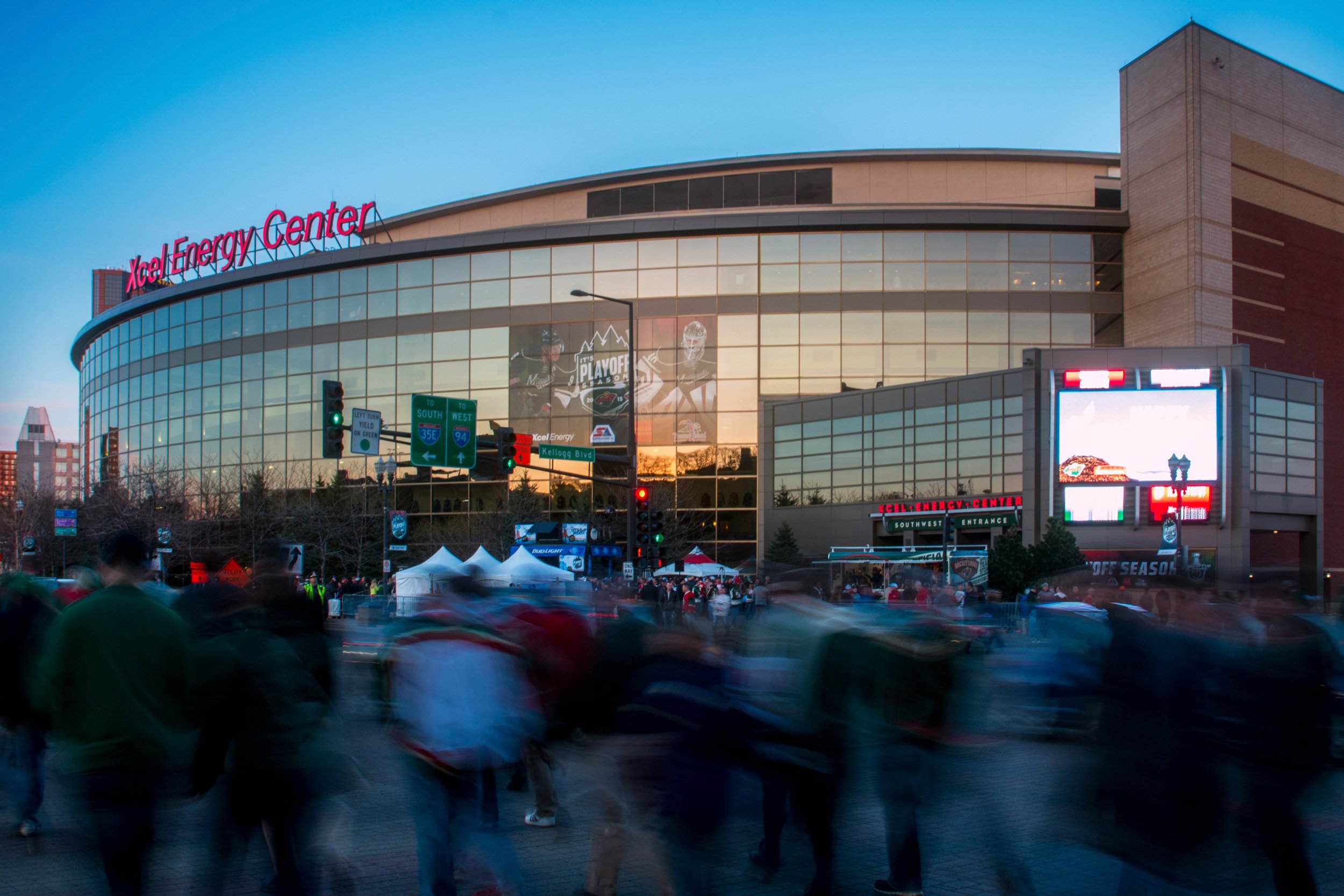How to Watch a Minnesota Wild or PWHL Game at Xcel Energy Center
Andrew.Parks
Wed, 08/21/2024 – 08:45
Located in downtown St. Paul, Xcel Energy Center is the home arena of the Minnesota Wild and PWHL Minnesota professional hockey teams. Throughout the year, it also hosts other special events and major concerts like the Eagles, Olivia Rodrigo, Pearl Jam and Madonna.
Here is how to make the most of a night at St. Paul’s top spot for sports, music and more….
What To Read Next
10 Minnesota State Parks for Your Next RV Camping Trip
Read More
Old-World Charm Greets Visitors to New Ulm
Read More
10 Spots to Savor Minnesota’s Sweetest Treats
Read More
Get help from the experts to plan your trip
Want to know the best spots in Minnesota? How about tips on how to make the most of your time in a specific city? Our Minnesota experts can answer your questions, offer advice, or plan the perfect Minnesota trip for you. For free.
Xcel Energy Center
Bad Weather Brewing Company
Tom Reid’s Hockey City Pub
Herbie’s On The Park
Patrick McGovern’s
Smorgie’s
Zambonis on 7th
Seventh Street Truck Park
The Apostle Supper Club
Wild Bill’s Sports Saloon -St. Paul-
Cossetta Alimentari
Holiday Inn St Paul Downtown
Hampton Inn & Suites Downtown St Paul
The Saint Paul Hotel and Grill
Caitlin Hannah

Xcel Energy Center before a Minnesota Wild game
/ Credit: Robert Ferdinandt, courtesy of Visit Saint Paul
WHERE CAN YOU PARK?
Parking for the arena is available via two parking ramps, the RiverCentre Parking Ramp and Kellogg Parking Ramp, which are connected to the complex. Additional surface lots, parking ramps, and metered street parking are available within walking distance of the arena.
Many local restaurants in the area also offer complimentary shuttles if you choose to dine before or after an event. Ride share services are available at designated pick-up and drop-off locations outside the stadium. Bike racks are located outside the arena and public transportation is also available.

Wrecktangle Pizza
WHAT KIND OF FOOD CAN YOU GET AT XCEL ENERGY CENTER?
Club Level tickets are not required for the VIP experience at new Xcel Energy restaurant Flynt & Kyndle, which specializes in shareable plates like a whole honey-brined rotisserie chicken, garlic smashed potatoes and a house salad of grilled corn, roasted dates, toasted pine nuts, Campari tomatoes and champagne vinaigrette.
Looking for something a little more laid-back? Stop by the Bud Light Fan Zone for happy hour specials on drinks and food before the event or walk through the concourse to find Sheboygan brats, hot dogs, walleye fingers, chicken strips, cheese curds, and sinful scoops of J&R’s cookie dough. Local favs like Pajarito, Revival, and Wrecktangle can also be found serving up everything from Detroit-style pizza to Southern BBQ.

Bad Weather Brewing Company
WHERE CAN YOU EAT OR DRINK AROUND XCEL ENERGY CENTER?
For hockey fans, walk down West 7th Street to Tom Reid’s Hockey City Pub, owned by the former Minnesota North Stars hockey player. The restaurant is decked out with hockey memorabilia and has multiple televisions to catch pregame coverage. For more hockey flair, visit Herbie’s on the Park. The restaurant is named after Minnesota hockey legend Herb Brooks. The restaurant serves up tavern fare, handcrafted cocktails and local beers.
More local favorites include Patrick McGovern’s Pub, Smorgies, Zamboni’s on 7th, Seventh Street Truck Park, Apostle Supper Club, Wild Bill’s, and Cossetta’s, which has been serving up delicious Italian pizzas, pastas and sandwiches since 1911.
Popular local brewery Bad Weather is just a short walk away, or utilize their event shuttle and get a taste of their local brews, including the popular Hopcromancer. They regularly host food trucks so check their website for the schedule.

The Saint Paul Hotel
WHAT ARE SOME NEARBY HOTELS IN DOWNTOWN ST. PAUL?
There are several hotels to stay within walking distance of the stadium, including chains like the Holiday Inn, Hampton Inn and Suites, and the luxurious, historic Saint Paul Hotel. St. Paul is also home to dozens of other hotels, and many offer complimentary shuttles to and from events.
For details about accessibility services at Xcel Energy Center, please see the arena’s resources page.

Xcel Energy Center
/ Credit: Robert Ferdinand, courtesy of Visit Saint Paul








